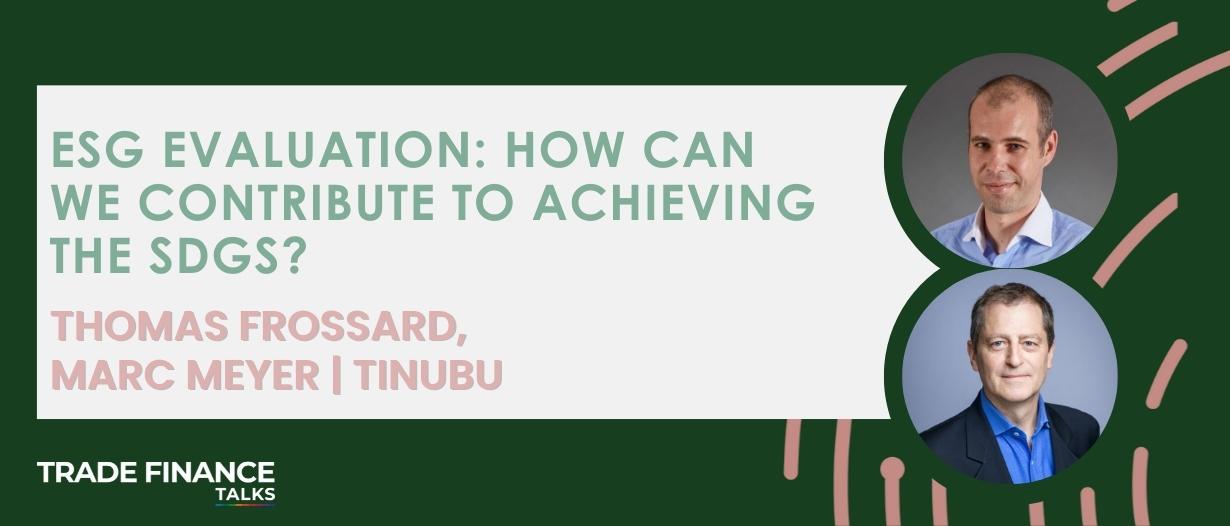Estimated reading time: 5 minutes
Environmental, social and governance (ESG) has been a hot topic for private and public credit insurers.
At the end of the day, ESG is just a rating system derived from corporate social responsibility (CSR) reporting. In practice, it is difficult to assess what changes it has brought.
Shouldn’t credit insurers shift their focus towards improving their contribution to the United Nations’ (UN) sustainable development goals (SDGs)? How can they contribute and how can digitalisation help them increase their impact?

The ESG rating challenge
There are many valuable ESG rating initiatives around the globe––from various players––and this is clearly a reason to be optimistic.
Yet we are no longer naive. There is no equivalent to International Financial Reporting Standards (IFRS) when it comes to ESG, and rating providers may be tempted to look kindly upon those who pay them.
We all know what the consequence of this is: greenwashing.
It would be easy to blame rating providers, but it is not so black and white. There are no standards governing the evaluation criteria or what should be evaluated.
As a result, and at best, corporate entities approach ESG as a compliance issue. At worst, it is used as a way to gain customers and investments without truly intending to have an impact.
ESG rating approaches may be based on company, product, or transaction assessments––all of which are valid and valuable.
However, they are rarely combined because such a comprehensive approach would be very complex. Unfortunately, it is probably the only way to avoid a company’s attempt to improve the process having adverse impacts elsewhere.
Developing standards for each dimension could certainly help everybody cope with this complexity.
Through its short, medium, and long-term credit insurance and surety offers, the industry has a broad vision, understanding, and control of project finance and trade transactions in the world.
So, it could be more prominent in promoting virtuous companies and trades.
Incentivise good ratings
In addition to their involvement in renewables, social infrastructure and waste and water treatment projects, credit insurers have quite a unique view on supply chains via their short-term products.
They could lower premium rates for such projects and make sure that the ESG analysis and monitoring is as comprehensive as possible since they are involved in the whole lifecycle of these assets from pre-shipment to decommissioning as part of their product portfolio. By sharing data, they can provide a 360-degree view, which is key to success in this area.
More practically, it is through operational processes that this general green movement must be implemented. It will require the following:
- Automation of processes and standardised use of project/ transaction assessment criteria (in addition to the usual risk assessment).
- Automated monitoring of criteria used in the initial underwriting phase for each project. This will remain a foundational element during the whole life of the contract.
However, there is a cost related to ESG measures, and in order to consider discounting premiums for suitable projects, insurers must find ways to absorb them.
Digital data and standardisation can certainly help in achieving this, provided that:
- They provide secure recording and tracking of all actions during the whole life of the covered/ insured project or transaction.
- They render these complex new processes cost-effective.
Promote impact
Beyond a static picture, we must also assess the objectives that the insured set for themselves and the progress they make over time.
Thanks to their buyer-centric underwriting approach, credit insurers have the means to develop business intelligence on companies’ supply strategies. They also have the potential to contribute to a proper assessment of the efforts a company makes to render its business more sustainable.
Progress could (and should) be the most important criterion rather than evaluating the nature of an activity. Given the current context, it is obvious that some are not green by nature but essential to communities, and it would be unfair to rate them solely on their carbon footprint.
As an industry and an ecosystem, we must also challenge the status quo.
It is certainly difficult to maintain the high level of collaboration between export credit agencies (ECAs) during troubled geopolitical times.
It is obviously more challenging to improve further collaboration with multilateral development banks (MDBs). Yet if our common goal is to enable project materialisation and end-to-end monitoring, it is a must.
We need to go out of our comfort zone. Technology is available to allow information sharing but nothing will happen without business and legal alignment.
In conclusion, we all saw Alok Sharma crying in his concluding remarks of COP 26. It was a sad moment and it occurred before the Russia-Ukraine conflict and the energy crisis. From an SDG point of view, the situation has worsened.
However, as Bob Marley said, we should get-up, stand-up and not give up the fight. One thing we have too little explored is how to think out of the box. In order to help us do so, we should be more diverse and consider hiring more people who have experience outside of our industry.
Shadow boards have proven to be efficient in very traditional industries such as the luxury industry not because they were hidden, but because they assigned tasks that had not been solved by experts for decades to people with a fresh perspective on the matter. Trade finance and infrastructure finance gaps could certainly fall in this category.


























